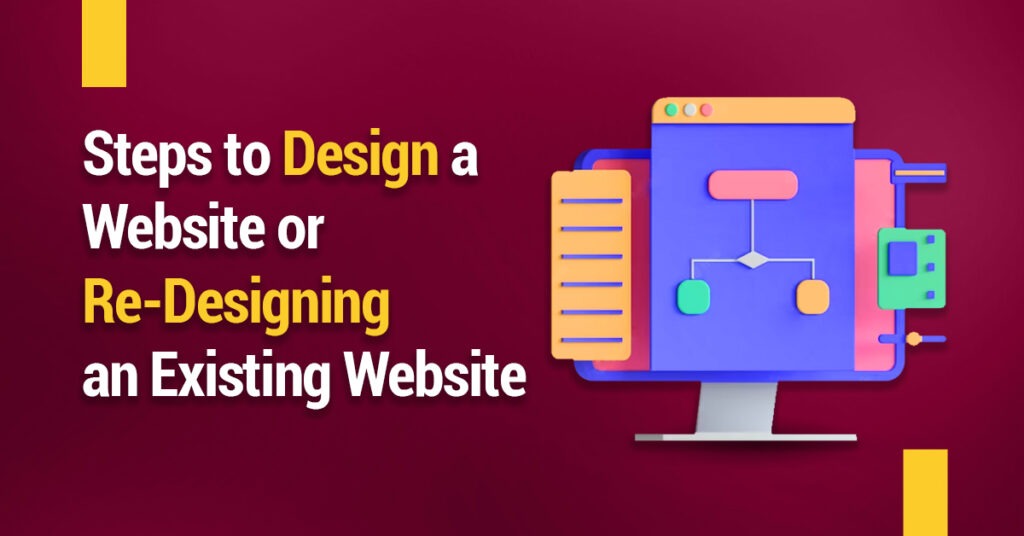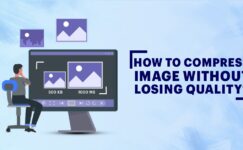What is the Web Design Process?

Well-designed websites are more appealing to the audience. They assist in understanding the product, brand, or company more profoundly and build trust for the long term. It offers a visually oriented interface with incredibly interactive indicators like attractive images, text, and tabs for interaction.
If you are looking for the easiest ways to create or re-design your existing website, no more worries, as you have come to the right place. Today I will discuss five simple steps to the Web Design Process that will help you gain traffic to your website and get monetization. Keep Reading!
Steps to Design a Website or Re-Designing an Existing Website

Designing a new website or re-designing an existing website is no longer challenging. Web designers often focus more on technical matters, but great websites are the ones that have a user-friendly interface. They must be easy, quick to use, and have an appealing visual interface because these factors directly influence the user experience.
Follow the given steps to Web Design Process.
1. Defining the Website Goal
For designing a website, you should have answers to these questions in mind, “What will be the purpose of the web? Who will be the target audience? What sort of content will it provide to its users? And what goals must it fulfill?”
It is a fundamental step in designing a web to know the purpose of the website, whether it will sell any product or entertain the audience via its content. Setting a goal is the most significant step in web design.
2. Website Design Strategy
Designing Strategy is the second and most crucial step from where problems and challenges begin. The most common problem a designer faces is scope creep. The project’s scope can keep expanding during the developmental process. The client can set a goal in mind, but sometimes it evolves and changes with time.
So you should stick to the original plan to avoid the challenges of the timeline, and the most important is the budget. Next comes the factor of purchasing a domain and hosting plan. The budget plays an influential role at this stage. Then you need to focus on the technical aspects like a programming language, a sitemap, and wireframe creation.
3. Content Creation
Content creation is essential because it is the main thing a user is visiting your page. If your content is strong, you can easily attract visitors to your website. Your content adds value to the website design, and powerful content makes the buyer purchase the product more efficiently. You should never ignore the content part if you want your website design to run smoothly. Always make your content SEO friendly and coherent with individual pages.
4. Visual Elements
Now that the website’s architecture and content are in place, we move on to the most meaningful stage of adding visual elements. It’s a challenge to visualize your content by making it more appealing to the audience. You can use several tools for this approach, like mood boards, style tiles, visual style guides, element collages, logos, and color choices.
High-Quality Images play a vital role in website design. They make the web more attractive. Visual Elements present a more professional look and help the website gain users’ trust. Images make the text more catchy and easy to digest. Visual Elements help you design a more user-friendly interface. It attracts more clicks, engagement, and revenue into your pocket. So if you need to compress images we have the best tool. We recommend you use ImageDaimond Image Compressor to compress images without losing quality, saving on page-load times
5. Test and Launch the Website
The next step plays an exceptionally crucial role in web design because it is the time to test your site. You should thoroughly check out the workings of your website on all devices and through all browsers. Resolve all the bugs or errors by correcting your coding mistakes.
You can use W3C Link Checker and SEO Spider for the testing process. Now that your website is free of all errors and you are satisfied, it’s time to launch it. Keep checking its work from time to time and maintaining its performance.
Conclusion
Designing a perfect website is not everybody’s cup of tea. In this article, we have discussed five simple steps to the web design process that will assist you in designing your website effortlessly. However, web design is a never-ending process that needs constant maintenance. You should check the workings of the website to generate revenue without pause. At the end of this blog post, as previously says if you want to yous high-quality images for your new website but these images impact on site speed. So, use Image Compressor to compress images in a good number of quality and quantity.





